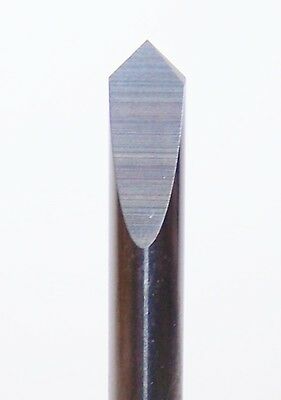That makes no sense to me at all.
The deeper you go the more time its going to take.
Like I said, I don’t know anything about Easel.
Maybe someone else can explain that.
With V carving you have to let the carve depth be determined by the width of the vectors. If you limit depth it has to create a flat bottom in areas.
Think about what it takes to make a flat bottom with a pointed bit? Very many minute passes equal long carve times.
With Vectric software the flat bottom can be done with a secondary bit (end mill) saving time. As I remember Easel does not offer flat bottom V. carving with second bit.
It actually came out really good once I adjusted the settings. Thanks to all of your help. I was wondering if you could help me out and sort of inform me on how you are able to calculate these settings. I don’t fully understand it (I.e. feed rate, plunge rate and depth per pass). I know you said by changing the depth per pass we were able to make it only 5 passes vs. 35. How would I be able to look at that and figure that out. I don’t like messing with the cut settings because I don’t fully understand them. 

I don’t get it either. I know you don’t know Easel too much. I was wondering if you could help me out and sort of inform me on how you are able to calculate these settings. I don’t fully understand it (I.e. feed rate, plunge rate and depth per pass). I know you said by changing the depth per pass we were able to make it only 5 passes vs. 35. How would I be able to look at that and figure that out. I don’t like messing with the cut settings because I don’t fully understand them.
Keep in mind that the 611 router on its lowest setting is something like 16000 rpm (someone else can correct me if i’m wrong)
I never run mine more than the the lowest setting.
There are a number of factors in choosing speeds and feeds.
- type of wood. Soft wood cuts easier than hard woods.
some woods hold detail better than others. (MDF is the worst) - bit geometry. Some bits you can run faster and deeper (more aggressive) than others.
(obviously, larger bits you can run more aggressively than the smaller ones)
I have never run my machine slower than 60 IPM with an 1/8 in cutter. (and more times than not, I run it at 100 IPM)
1/4 inch bits I will run at 100 IPM and generally a DOC of about .08 - .1 "
If I’m doing a 3D job, I will run my finishing tapered ball nose at 150 IPM.
You can actually burn up a cutter by feeding it to slow.
A general rule of thumb is to never take a step over more than half the diameter of the cutter.
By the way, your sign looks great.
Good job.
Is the actual cutting part 1/8"? Or is the shaft 1/8"? I would not bother with a 1/8" engraving bit for work like this. Wait for the 1/2".
Does your bit look like this?
Or this?

That is some great information. Thank you so much. I really appreciate it.
The bit looks like the first one. I have the second one as well, but not sure when to use it yet. I know it’s for more detailed engraving.
That changes some. Since it’s 1/8", I’m guessing you have this one?
That one has a max cut diameter of 6mm, so math tells us that cutting more than 3mm deep will cause problems (with Easel generated toolpaths).
If you don’t have that one, can you share the exact bit you have?
Also, if you want to do a lot of V-Carving, get one of these and one of these.
Wow. Thank you for this. I will definitely look into getting those. And that was the exact bits I have.
Here is another source that I use.
This is great. Thank you so much
Even with the 1/4 inch shank I run .1 depth of cut and speed at 200%, the V-bit is strong enough to handle the increased resistance.

